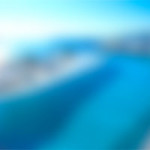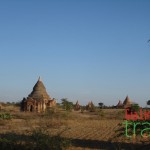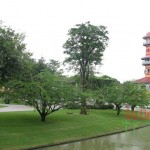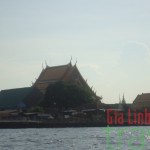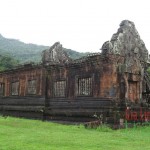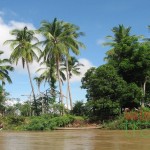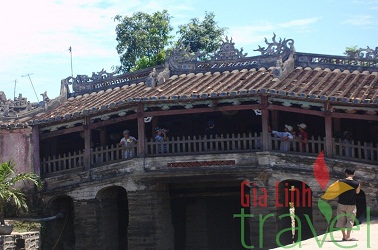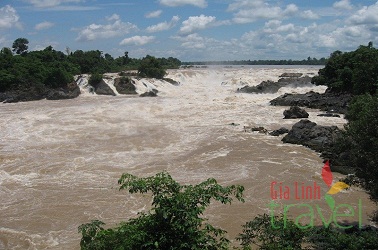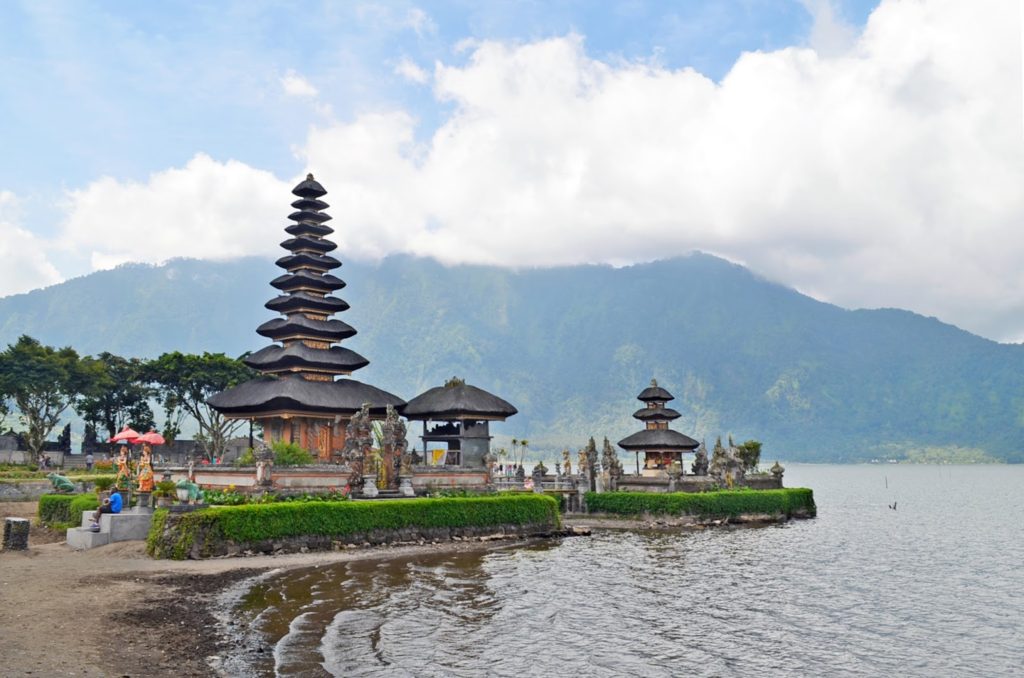Destination: Yangon/Bagan/Mandalay/Bangkok/Chiang Mai/Chiang Rai/Chiang Sean/Chiang Khong/Pakbeng/Oudomxay/Nongkhiow/Luang Prabang/Vang Vieng/Vientiane
B=Breakfast, L=Lunch, D=Dinner, G=Guide
Day 1: Yangon arrival (G)
Arrival in Yangon. Met and transfer to the hotel for check in. Then, you’ll be free. Overnight stay in Yangon.
Day 2: Yangon (B, L, G)
Morning, breakfast at the hotel. Visit the National Museum-04 storey building which displays all about Myanmar, mainly the Lion Throne of the last king of Myanmar, who exiled to India in 1886, the Botahtaung Pagoda-the combination of stupa & temple, the colonial area, the Sule Pagoda-the landmark of Yangon city Centre, which has been enshrined the hair relic of Buddha, the Chaukhtatgyi Reclining Buddha Image-70 meters long and huge colossal image. Finally, visit the Shwedagon Pagoda-one of the wonders of the world where we can observe the ways of life of Buddhists such as offering the water, candles, flowers, etc. Overnight in Yangon.
Day 3: Yangon/Bagan (B, L, G)
This morning we drive to the airport for the flight in the morning to Bagan. Check in the hotel and departure for a tour of the Bagan Archaeological Zone World Heritage Site. A thorough exploration of Bagan including Nyaung Oo Market, the Shwezigon pagoda, the prototype of the ancient stupas of Myanmar; Kyansittha Umin, the temple Wet-Kyi-Inn Gubyaukgyi with mural paintings of the 13th century and the Temple Htilominlo. The lunch will be serve at a local restaurant
In the afternoon, following the visit of the lacquer consumption workshops, followed by Manuh Temple built by King Manuh in exile; Nanphaya, which was the residence of King Manuh, the Ananda Temple, an architectural masterpiece and the monastery Kyaung decorated with colorful murals. Enjoy the breathtaking sunset from one of the temples of Bagan.
You will spend the night in Bagan
Day 4: Bagan/Mandalay (B, L, G)
Morning, breakfast at the hotel. Drive to Mt. Popa – an extinct volcano which is known as “Home of the Spirits” and observe the life of rural area on the way such as producing the palm sweets. We may stop several places for making the photos and knowing the countryside. Climb up 777 steps to reach on the top of Mt. Popa cliff temple and enjoy the landscapes. Come down and proceed to Mandalay. Check in at the hotel and leisure. Overnight in Mandalay.
Day 5: Mandalay/Yangon (B, L, G)
Morning, breakfast at the hotel. Visit Mahamuni Buddha Image-one of the most sacred Buddha Images in Myanmar with 15 cm thickness of gold leaf and many pieces of precious stones, such as diamonds, rubies, pearls, sapphires, emeralds, etc. Excursion to Amarapura (01:00 hr), an ancient capital of Myanmar, where we can observe the life of over 1000 monks at Mahagandaryon Monastery & silk weaving factory. Proceed to Sagaing, where we can observe the fascinating landscapes of the Ayeyarwaddy River from serene Sagaing Hill, the place of over 700 monasteries. Drive to Mandalay and visit Mahamuni Buddha Image-one of the most sacred Buddha Images in Myanmar with 01 ton of gold-gilded and many pieces of precious stones, such as diamonds, rubies, pearls, sapphires, emeralds, etc. Continue visiting of traditional handicraft workshops such as, marble carving, gold leaves beating, Kuthodaw Pagoda, which houses 729 marble slabs sculptured the teaching of Buddha, Shwenandaw (Golden Palace) Monastery, which is the masterpiece of wood carving, etc.
In the late afternoon, transfer to the airport for your flight to Yangon. On arrival, transfer to the hotel. Overnight in Yangon.
Day 6: Yangon/Bangkok (B, G)
After breakfast, free until drive to the airport for your flight to Bangkok. On arrival at Suvarnabhumi Airport, you are met by our guide and transferred to hotel. The glorious history of Thai Capital, Bangkok is much interwoven with the Chakri dynasty which still reigns but no longer rules Thailand. In the midst of dynamic modern growth, this bustling metropolis still preserves plenty of cultural heritages making it the national treasure house. No activities planned for this afternoon , however our guide is on hand to advise some available options. Overnight in Bangkok.
Day 7: Bangkok city tour/Chiang Mai by overnight train (B, L, G)
The longtail boat trip is a perfect way to start our exploration of Bangkok. We navigate along the Chao Phraya River and venture into the many lively inner canals which provide some fantastic views of the local life close up. Along the way we make stop over at Wat Arum, the temple of Dawn, before continuing to the Grand Palace. This masterpiece is dedicated to the Thai Royal Family’s ceremony. Nearby are the magnificent Wat Phra Kaew, which is famous for the Emerald Buddha Image and the Vimarnmek Museum, the world’s largest building entirely made of golden teak . We visit this complex and drive through the many vibrant streets of China Town to the Wat Pho, one of the most significant temples in Bangkok. This sacred temple houses a gigantic gold plated Reclining Buddha. We board a night train to Chiang Mai. The train conditions are basic; we travel on soft sleeper class.
Overnight on board.
Day 8: Chiang Mai (B, L, G)
The train journey delivers you to Chiang Mai by mid morning. The capital of the north, Chiang Mai has rich historical and cultural heritage which is still evident in the architecture with over 300 temples spreading in and around. Heading out of town we drive west towards the famous Doi Suthep Mountain and embark on a walk leading us to Wat Prathat Temple near the summit. At an elevation of over 1,000 m, the temple grounds affords a panoramic view over the surrounding countryside. We follow this with a visit to the old and new parts of the town featuring the great diversity. The tranquil town of Chiang Mai has been always noted for the exquisite handicrafts of which the combination with the hill tribe people’s traditional wares, offers fantastic shopping opportunities. We continue to the neighbouring villages of Sankampaeng and Borsarng to see the various cottages industries including silk weaving, wood carving, silver ware and umbrellas making. As a highlight of this evening , we visit the vibrant night market which is full of local treasures.
Overnight in Chiang Mai.
Day 9: Chiang Mai/Chiang Rai/Chiang Sean – Adventure packages (B, L, G)
Upon leaving the town we make our way towards Chiang Sean, the royal capital of the ancient Lanna Kingdom. This delightful town is nestled on the Mekong Riverbank which is now the border between Thailand and Laos. The drive is long , but views are fantastic. On arrival in Chiang Sean we visit some of its major sights including Wat Phrathat Jom Kitti and Wat Chedi Luang. The interesting journey leads us through the verdant and rugged mountain scenery to the famous Golden Triangle in which powerful warlords have fought for control the opium trade. We have time to stroll around and make a stop to visit the opium hall museum. This gleaming mansion is built amid mountains which were covered with the intense red blush poppies, few decades ago. The display of pictures and documents reflect the global history of opium dating back to 5,000 years towards.
Overnight in Chiang Sean.
Day 10: Chiang Sean/Chiang Khong/Pakbeng (B, L, G)
Today we depart hotel and travel by roads to Chiang Khong border to enter Laos. The trip ends after arrival at border gate. On arrival, we embark on our traditional boat cruising downstream on the Mekong River. This part of the Mekong River is quite narrow and both banks of the rivers are bordered by amazing scenery of beautiful green forests and towering hills. The pace is very relaxed as we drift along the river in our boat, a perfect way to observe rural life close up. Along the way, we stop over at Ban Houeilampen to visit the Hmong hilltribe people. They are very poor, but have a vibrant culture and an interesting history. Overnight in Pakbeng.
Day 11: Pakbeng/Oudomxay/Nongkhiow (B, L, G)
We have an early start visiting the hill tribe market before leaving Pakbeng; we then begin our expedition, venturing into the mountainous and remote area in Northern Laos. The verdant and rugged mountain scenery combined with the colorful local population makes this an unforgettable experience. Oudomxay province is residence to a mixture of 23 ethnic minority groups. We make a few rest stops along the way, which gives you the opportunity to see the ethnic minority groups of Hmong, Khmu, Akha and Taidam. The hill tribe people are unfailingly friendly; welcoming you with waving hands and smilling faces. The journey to Nong Khiow leads us through areas with dramatic landscape. We will also visit the hilltribe villages of Hmong at Ban Jarong, Ban Songja, Khmu before arriving at Nong Khiow in late afternoon. Nong Khiow is a remote village situated by the KzOvernight banks of the river, across a dramatic valley the surrounding mountainous scenery is stunning. Overnight in Nong Khiow
Day 12: Nong Khiow/Luang Prabang (B, L, G)
After breakfast we board a traditional boat downstream on the Nam Ou River, drifting along the peaceful river, stopping over to visit some timeless villages along the way and the weaving village of Khmu. Our journey takes us to Pak Ou, where Nam Ou River meets with Mekong River. We take a visit to the mysterious Pak Ou Caves, two linked caves crammed with thousands of gold lacquered Buddha statues of various shapes and sizes left by pilgrims. We continue our trip down to the UNESCO World Heritage City of Luang Prabang. This former royal capital with its gleaming temple roofs, fading colonial architecture and stunning mountain backdrop retains a unique charm rarely found in all Asia. There is little traffic on the roads and monks in orange robes scurry in all directions carrying umbrellas shading themselves from the Sun. A visit to Luang Prabang would be incomplete with ascending 329 steps to the top of Mount Phousi for an enjoyable exploration of the sacred, gilded stupa and to enjoy a beautiful sunset view of the city and its glowing reflection on the Mekong River. From there, we explore the Night Market, where you can find a lovely selection of handmade textile made by local and hill tribe people surrounding Luang Prabang. Overnight in Luang Prabang
Day 13: Luang Prabang (B, L, G)
An optional early start gives you the fantastic opportunity to participate in the daily morning rituals of saffron-clad monks collecting offerings of Alms (ubiquitous sticky rice) from the faithful residents. This tradition is very unique in Laos, being the only Buddhist nation still preserving the procession. After breakfast, we explore this charming city. From 1353 until 1545 it was the capital of the Lane Xang kingdom before power was transferred to Vientiane. Despite the move Luang Prabang remained as the seat in the monarchy and when the kingdom broke up in 1694, one of the deceased king’s grandsons established a rival kingdom to those in Vientiane and Champassak. Though weakened, the Luang Prabang royalty endured until 1975, when after the reign of 63 kings it was formally dissolved. You will spend the day exploring the temples and sites in what is called one of the last Shangri-La’s of Southeast Asia. You will visit Wat Xiang Thong, the most important Buddhist monastery in the country, Wat Visoun, Wat Khili and Wat Mai. Later, we visit the former Royal Palace, now a National Museum (close Tuesday) where you will find ornate, gilded and brocaded reception rooms, as well as Buddha and spectacular artefacts including the Prabang, a large holy image, which was given in the 14th century by the Khmers to King Fa Ngum. Overnight in Luang Prabang
Day 14: Luang Prabang free (B)
Your time will be your own!
Day 15: Luang Prabang/Vang Vieng (B, L, G)
After breakfast, we leave this charming city in the early morning for our journey to Vang Vieng. Our journey will be strenuous as we drive along one of the most scenic but also one of the roughest routes in Asia. In the afternoon we arrive in Vang Vieng, a small and tranquil town, which is nestled on a bend of the Nam Song River. Its stunning scenery with a mixture of quiet water and limestone outcrops remains unspoiled, despite recent developments with the advent of tourism. We visit Tham Hoy Cave, a large cave that runs 7 kilometres deep and surrounding hilltribe villages of Khmu and Hmong. Overnight in Vang Vieng.
Day 16: Vang Vieng/Vientiane (B, L, G)
After breakfast, we spend half our day driving to the capital city Vientiane, which is located on the banks of the Mekong River. Vientiane is a charming and fascinating capital, with an interesting mix of Lao, Thai, Chinese, Vietnamese, French, Soviet and American influences. A city tour acquaints us with the capital and after a short rest if time permits we start visiting some of the major sights; including the oldest temple Wat Sisaket, with thousands of miniature Buddha statues and the former royal temple of Wat Prakeo, which previously housed the famous Emerald Buddha Image. Enroute to Lao’s national precious heritage, the famous and sacred structure of That Luang Stupa, you will have the opportunity to take some pictures of the imposing Patuxay Monument, which is well known as Vientiane’s own Arc de Triumph. Overnight in Vientiane.
Day 17: Vientiane departure (B, G)
You’ll be free until the guide and driver come and take you to the airport for your departure flight.
